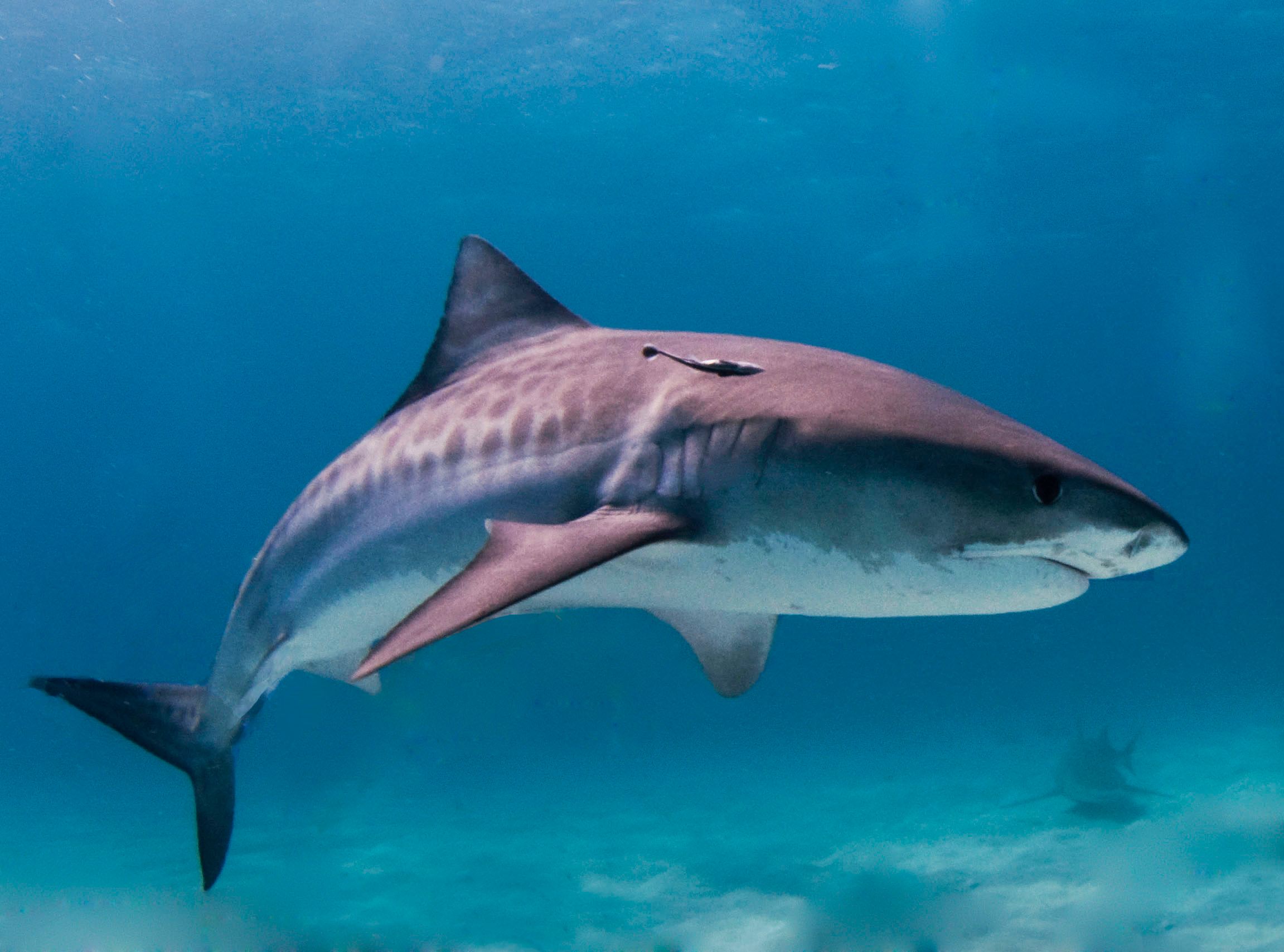In North Carolina, It’s Been Shark Week All Summer. Why?
 A large tiger shark—one of the species that frequents the North Carolina coast, and a likely culprit for the bites. (Photo: Albert Kok/WikiCommons CC BY SA 3.0)
A large tiger shark—one of the species that frequents the North Carolina coast, and a likely culprit for the bites. (Photo: Albert Kok/WikiCommons CC BY SA 3.0)
Who doesn’t love the beach? With summer comes the wonderful feeling of sand between your toes, cool sea breezes, cocktails at sunset, and… shark attacks?
On July 4 in Surf City, North Carolina, a former Marine’s Independence Day festivities were rudely interrupted when a certain toothy fish attacked, leaving the 32-year-old man with lacerations on his right arm. But this was no isolated incident. Over the past three weeks, the North Carolina coast has seen an outbreak of 8 to 12-foot-long sharks coming into contact with people. These are likely bull sharks or tiger sharks. Though no lives have been lost, two young swimmers each lost an arm after separate June 14 shark attacks around 90 miles apart on Oak Island.
What makes this past month in North Carolina such an anomaly, however, is that the yearly total for shark attacks in North Carolina in 2014 was only four—with no fatalities or serious injuries. However, as of July 8, North Carolina has seen eight shark attacks in 28 days.
So what is going on in North Carolina? Are the sharks becoming more aggressive, or are humans doing something wrong?
 A pier at Ocean Isle beach in North Carolina. (Photo: Justin Champion/WikiCommons CC BY SA 3.0)
A pier at Ocean Isle beach in North Carolina. (Photo: Justin Champion/WikiCommons CC BY SA 3.0)
To put the North Carolina attacks in context, we need to look at the numbers. Shark species are threatened, and their populations are at an all time low. But in 2014, there were 52 “unprovoked” attacks in the continental United States, according to the International Shark Attack File compiled by the University of Florida’s Museum of Natural History. While that seems like a lot, of the 52 attacks, over 28 were from a single stretch of beach in New Smyrna, Florida (known as the shark attack capital of the world).
There are several dominant theories floating around about the increase in shark attacks in North Carolina. Local fishermen told the Charlotte Observer that the shark nibbles could be due to one rogue shark that has developed a taste for human flesh. The culprit is most likely the bull shark, an aggressive species, but large tiger sharks have also been seen in the vicinity of the attacks. The rogue shark theory, as seen in the classic film Jaws, is fairly unlikely. Humans are bonier and much less fatty than the sharks’ preferred prey: seals.
On July 5, George Burgess, a scientist and shark expert with the University of Florida, told NPR that the root cause of the uptick in shark bites is due to ecological and oceanographic factors. Summer started early in North Carolina this year, and the unseasonably warm temperatures, coupled with the traditional turtle hatching season, have brought numerous sharks closer to shore. School’s also out, so there are groups of people fishing, surfing, and swimming in close proximity to one another.
 A sunset paddle board on Wrightsville Beach, NC seems peaceful–until you see what’s beneath the waves. (Photo: James Willamor/Flickr)
A sunset paddle board on Wrightsville Beach, NC seems peaceful–until you see what’s beneath the waves. (Photo: James Willamor/Flickr)
This is the true reason for the bites: there’s just too many people in the ocean. Since 1900, the number of attacks has increased every subsequent decade. According to the International Shark Attack File, the primary academic source for human-shark interactions, this is not due to a change in the shark’s behavior.
The numerical growth in shark interactions does not necessarily mean there is an increase in the rate of shark attacks; rather, it most likely reflects the ever-increasing amount of time spent in the sea by humans, which increases the opportunities for interaction between the two affected parties.
So what we have in North Carolina is a simple statistical trap. More people swimming equals more shark bites. However, there are specific ways you can reduce your likelihood of actually being attacked. Don’t swim alone at dusk or dawn, when sharks are likely to be feeding. If you see birds diving, or bait fish jumping, there’s probably sharks around feeding. If you are a fisherman, don’t chum the water near swimmers. And if you’re really paranoid, go ahead and order the Sharkbanz electromagnetic wristband, which is already popular on the Eastern Seaboard, or this shark-deterring “invisibility wetsuit” from Australia.







Follow us on Twitter to get the latest on the world's hidden wonders.
Like us on Facebook to get the latest on the world's hidden wonders.
Follow us on Twitter Like us on Facebook